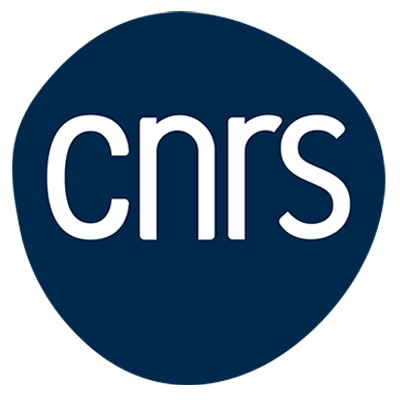IRN WONDER
IRN (ex-GDRI) WONDER - World Oilalg Network for Design of processes and strains for Elaboration of Renewable energy from microalgae - on engineeringIRN WONDER
2021-2025
Contact :
IRN-WONDER@univ-nantes.fr
IRN WONDER
Website
IRN WONDER
News

Botryococcus braunii: excretion of hydrocarbon. Credit: GEPEA CNRS

Botryococcus braunii: hydrocarbon visualisation. Credit: GEPEA CNRS

Oil from Botryococcus. Credit Tsukuba University
Introduction
The program of the IRN (ex-GDRI) is devoted to biofuel and material production from microalgae. To develop a sustainable and industrial production, this implies indeed biological and technological breakthroughs which would be achieved only if an important scientific effort is conducted on a large set of scientific topics such as establishment of culture method of the useful algae, gene modification for improvement of productivity, optimization of culture apparatus, development of harvesting and extraction technology, analytical and synthetic chemistry for reforming biomass products for future commercialization. The common project for the different teams will be organized around the culture and the valorization of Botryococcus braunii, which has attracted particular interest due to its ability to accumulate extracellular long-chain hydrocarbons. Bioproduction of hydrocarbons is one of the challenges facing post-peak oil production in the future. A credible option for the production of sustainable biodiesel or biojetfuels could be microalgae oils.
Missions and research themes
Scientific area covers: (1) further determining and controlling reactions involved in hydrocarbon biosynthesis and secretion by environment factors or genetic engineering; (2) optimizing the culture conditions and design innovative PBR systems to improve the productivities; (3) recycling fuel gas and reuse waste water with environmental benefits; (4) recovery of liquid hydrocarbons through a continuous cell-recycle process by “milking” strategy for nondestructive oil extraction; (5) exploiting other economic metabolites and co-valorization of residues to reduce the cost, biopolymers for example.
Biology
- Gene transfer technology
- Whole genome and metabolome analyses of an axenic strain of Botryococcus
- High-throughput chemical monitoring method for race A, B, L and S of Botryococcus
Optimisation of photobioreactor in solar conditions
- Increase of volumic productivity
- Development of advanced control of photobioreactor
- Development of passive temperature control
- Study of the effect of non-absorbing cap-shaped droplets condensed on the backside of transparent windows on their directional-hemispherical transmittance and reflectance.
Cultivation with wastewaters
Harvesting and extracting hydrocarbons
- Study of the physiology of Botryococcus braunii, which is a green microalga capable of generating and storing long chain hydrocarbons such as squalene and botryococcene in their matrix external to their cells.
- Development of ‘milking’ microalgae process by using non-destructive extraction of hydrocarbons.
Applications
- Bioenergy
- Algae also offer a variety of natural products, especially hydrocarbons derived from fatty acids and isoprenoids, that can be coupled with novel chemistries to produce advanced polymeric materials, in particular renewable and biodegradable polyurethane products.
- Cosmetics: development and evaluation of face, eye and body creams containing botryococcene.
MAIN PROJECTS OF RESEARCH
The program of the IRN (ex-GDRI) is devoted to biofuel and bioplastic production from microalgae. To develop a sustainable and industrial production, this implies indeed biological and technological breakthroughs which would be achieved only if an important scientific effort is conducted on a large set of scientific topics such as ① screening of useful algae, ② establishment of culture method of the useful algae, ③ gene modification for improvement of productivity, ④ optimization of culture apparatus, ⑤ development of harvesting and extraction technology, ⑥ Analytical and synthetic chemistry for reforming biomass products for future commercialization, etc. The global process of biofuel production from microalgae covers a large set of research areas which cannot be addressed with sufficient expertise by only one laboratory. In addition, because of the strong relation between biology and exploitation processes, there is a high need to promote collaborative research. This is then the aim of our network of national research centers to promote exchanges between the different partners which individually present expertise in the different fields requested for the setting of microalgae biofuel production industry: Algae Biomass and Energy System R&D Center (ABES) of University of Tsukuba (UT) is in the field of ①, ② and ⑥, the California Center for Algae Biotechnology (Cal-CAB, UCSD and UCLA) is in the field of ③, ④ and ⑥, GEPEA is ②, ④ and ⑤, Murdoch University (MU) is in the field of ④ and ⑤.
institutions and laboratories involved
France
• GEPEA – UMR 6144 CNRS/Université de Nantes/IMT Atlantique/ONIRIS, France (coordinators: Dr. Olivier Gonçalves / Dr Eric Leroy)
Australia
• Algae R&D Centre, Murdoch University, Australia (coordinator: Dr. Navid Moheimani)
Japan
• ABES (Algae Biomass and Energy System R&D Center) – Tsukuba University, Japan (coordinator: Prof. Hirofumi Matsui)
USA
• Cal-CAB (California Center for Algae Biotechnology) – University of California (UCLA & UCSD) (coordinators: Prof. Laurent Pilon – UCLA, Prof. Michael Burkart– UCSD)

AlgoSolis, the R&D facilities of the GEPEA for microalgae production and biorefinery. Credit: Frank TOMPS

Botryococcus algue. Tsukuba Credit University

ABES lab of Tsukuba University. Credit Tsukuba University
